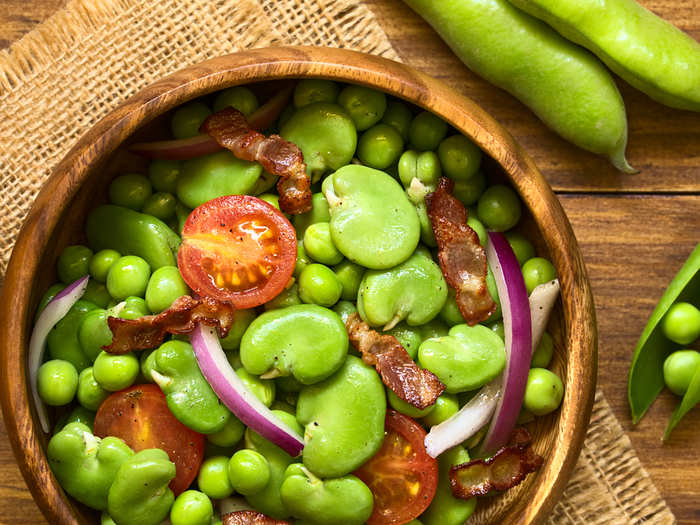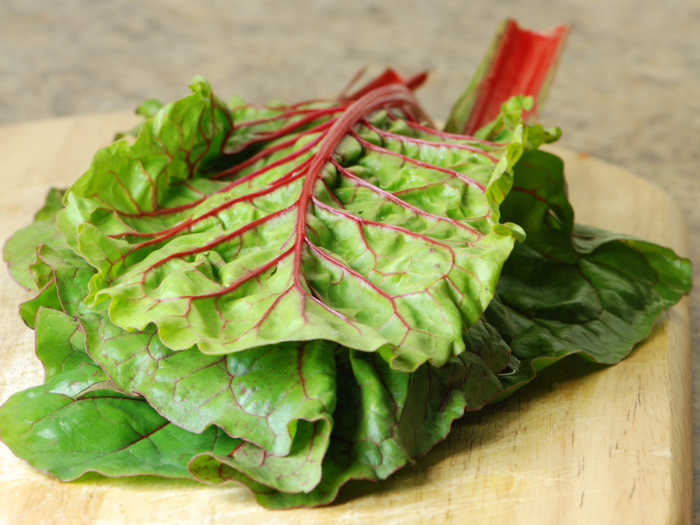10 fruits and vegetables you should be eating more of this summer
Watercress

Fava Beans

Popular in the Middle East, Europe, Asia, and South America, Fava beans are a healthy summer delicacy, available in produce stores from late spring though most of the summer season. These legumes, also known as broad beans, are a great source of lean protein, as well as a good source of potassium, magnesium, zinc, and vitamins B1, B6, and K. They are also rich in fiber and have no cholesterol or saturated fat. Fava beans can be served raw or cooked, though the pods must first be blanched.
Watermelon

Turns out this summer classic is indeed the perfect choice for a healthy snack after a long day in the sun. As its name implies, watermelon is almost 92 percent water, making it a great source of hydration in hot weather. It only has 88 calories in a two cup-sized serving and one gram of fiber, which slows digestion and helps keep you feeling full longer. It is a great source of lycopene, an antioxidant that may help protect cells from damage.
Swiss Chard

With dark leaves and red, purple, or yellow stalks, Swiss chard is a leafy green vegetable that is also included on the CDC list of “powerhouse” fruits and vegetables for being packed with nutrients and vitamins.
Studies have shown that chard can be especially beneficial to diabetics because it has unique benefits for blood sugar regulation. The vegetable contains syringic acid, which inhibits the activity of the enzyme alpha-glucosidase (an enzyme that usually breaks down carbohydrates into simple sugars). Swiss chard also has a good amount of fiber (3.5 grams per cooked cup), protein, antioxidants, calcium and Vitamin K. As an added bonus, a cooked cup only has 35 calories. Swiss chard can be eaten raw in salads, or cooked and sauteed.
Passion Fruit

This exotic fruit is a great summer treat, with a long list of health benefits attributed to it. Native to South America, passion fruit is a source of fiber, antioxidants, and vitamins A and C. One serving of this fruits will also give you two times more potassium than a banana.
Radishes

Generally underrated, radishes are actually very good for you. This root crop is low in calories, as well as saturated fat and cholesterol, due to its high water content (about 90%). Radishes are also a great source of vitamin C, fiber, potassium, and folate. They are natural diuretics and are very filling (keeping you from needlessly snacking.) They are also good for the liver as natural detoxifiers and can even be used to treat bee stings and insect bites because of their anti-pruritic properties. Radishes are also included on the CDC’s list of “powerhouse” fruits and vegetables.
Arugula

Also found on the CDC’s list of “powerhouse” fruits and vegetables, arugula is a leafy green that is in season from late spring through September. It is part of the cabbage family and has a mild peppery, spicy taste. It has just 4 calories in a cup-sized serving, while being excellent source of folate, fiber, calcium and vitamins A, C, and K. In fact, it contains 14 percent of your daily vitamin K requirements. This popular green also contains lutein, an antioxidant that helps maintain healthy eyes, skin, and heart.
Peaches

Peaches are a pretty tasty and healthy summer snack: They are low in calories (with a typical peach only containing 68 calories) and a great source of fiber. The fruit also contains 10 different vitamins, including vitamin C, an antioxidant and tissue-builder, and also vitamin A, important to healthy vision. Peaches are also a good source of vitamins E and K, potassium, magnesium, and calcium.
Peach season is at its peak in July and August. Try grilling them to make an extra special treat.
Zucchini

Zucchini is a popular summer squash that can be served raw, grilled, rolled, or diced. It has only 20 calories per cup, no fat or cholesterol, while providing 35% of your daily-recommended vitamin C. It is also a great source of fiber, and potassium. Try making “zoodles” this summer with a spiral slicer that transforms zucchini into a healthy substitute for pasta.
Raspberries

These luscious, sweet little red berries are a great source of fiber: one cup has 8 grams of fiber, some of which is soluble in the form of pectin, which helps lower cholesterol. They are also a source of antioxidants, vitamins and minerals, including potassium and vitamin C. A cup of raspberries only has 64 calories, and can even possibly help fight inflammatory conditions, such as arthritis.
Popular Right Now
Popular Keywords
Advertisement